I have a problem to solve with the time series. My data set looks like:
Date;hours;result
2021-01-01;180;2.78
2021-01-01;196;2.68
2021-01-01;170;2.53
2021-01-01;181;2.71
2021-01-01;169;2.43
2021-01-01;201;2.89
What would be the best approach to estimate the number of hours for the next day, to achieve the highest result?
I was thinking about Random Walk for Times Series but i have no clue how can I force the algorith to combine all 3 factors. In all examples i found there is always prediction f(x).
